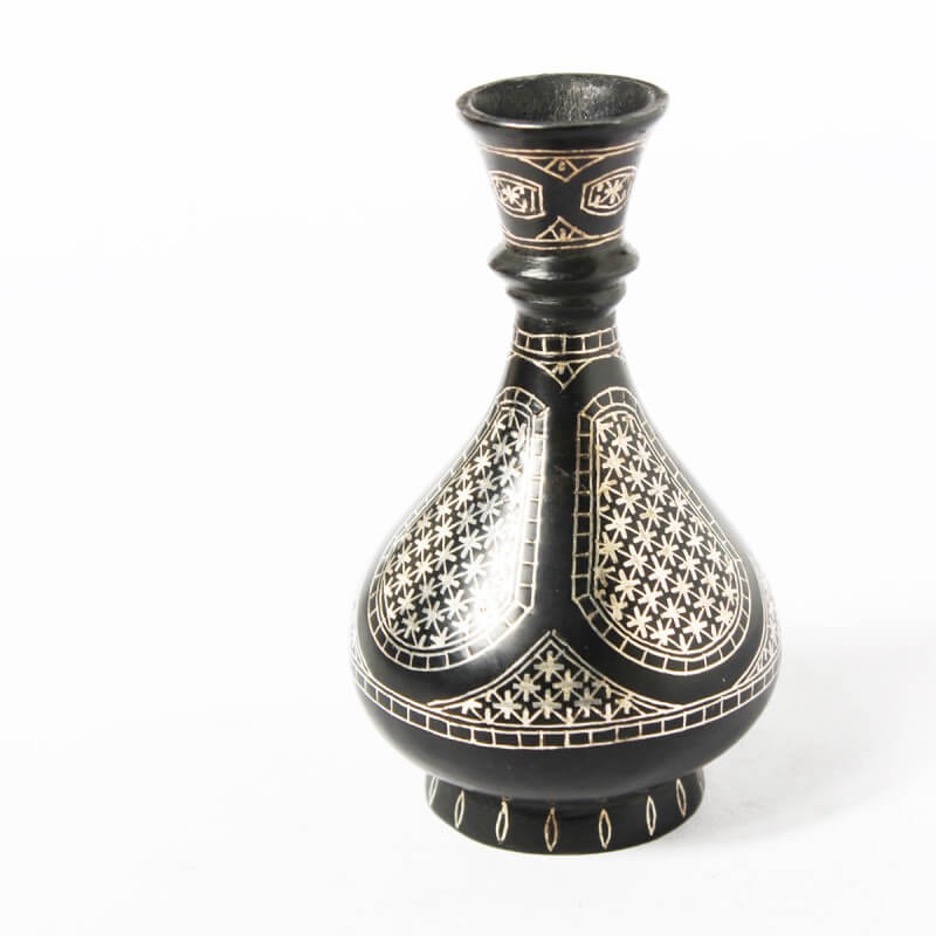Bidri

India’s syncretic culture is best exemplified by its art forms, of which the art of bidri is just one example. The term “bidriware” originates from the township of Bidar, in the southern state of Karnataka, and traces back to the 14th century rule of the Bahmani Sultans.
Bidriware is made from cast white brass (copper-zinc ratio of 1:16). First, a mold is formed from the soil, which is made malleable by the addition of castor oil and resin. The molten metal is then poured into it to obtain a cast piece which is later smoothened by filing.
The casting is now coated with a strong solution of copper sulphate to obtain a temporary black coating over which designs are etched freehand with the help of a metal stylus. This is then secured in a vise and the craftsman uses small chisels to engrave the design over the freehand etching. Fine wire or flattened strips of pure silver are then carefully hammered into these grooves. The article then is filed, buffed, and smoothed to get rid of the temporary black coating. This results in rendering the silver inlay hardly distinguishable from the white brass. The piece is now ready for the final blackening process.
Traditionally, the craftsmen of Bidar use soil (which they identify by taste) taken from the grounds of a 15th century fort in Bidar, which is rich in potassium nitrate. The soil is mixed with ammonium chloride and water to produce a paste which is then rubbed onto a heated brass surface. The paste darkens the brass but not the silver inlay. The paste is then rinsed off to reveal a shiny silver design that is striking in contrast against the black surface. As a finishing touch, oil is applied to the finished product to deepen the matte coating. The finished product appears black with brilliant silver inlay.
